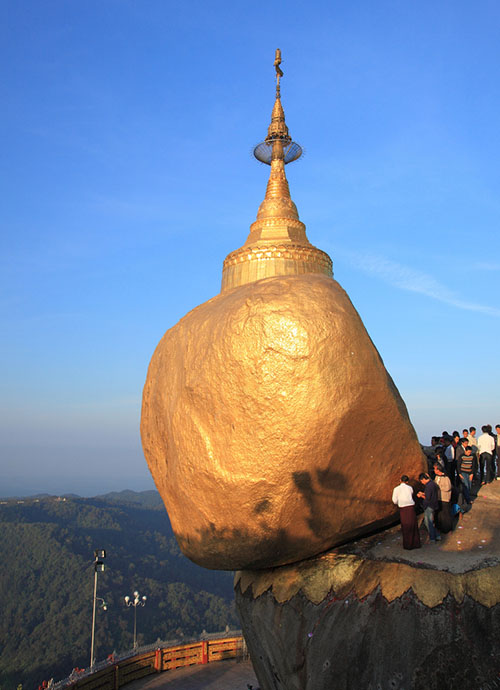
Golden Rock (kyeikhtiyo pagoda)
The pagoda is located near Kyaikhto in Mon State in the northern part Tenasserim coast. The Golden Rock is situated at an elevation of 1,100 m (3,609 ft) above mean sea level, on top of the Kyaikhtiyo hill (also know as Kelasa hills or Eastern Yoma mountains), it is on the Paung-laung ridge of the Eastern Yoma mountains. It is at a distance of 210 km (130 miles) from Yangon and 140 meters (460 ft) north of Mawlamyine, the capital of Mon State. The Kinpun village 16 kilometers (9.9 miles) is at the base of Mt.Kyaikhtiyo. It is the closest to the Kyaikhtiyo Pagoda. From Kyaikhtiyo, the foot trail or road starts for the Golden Rock. On this approach, there are numerous granite boulders on the mountain, perched in precarious condition. Near the top of the mountain, there are two large lions guarding the entrance to Kyaikhtiyo Pagoda. From this location, know as Yatetaung (the last point for vehicular traffic), pilgrims and visitors have to climb to the Golden Rock barefoot. The paved mountain track, built in 1999, from the bus terminal at Yatetaung, is along a dusty section with kiosks on both side and the climb of 1.2 kilometers (0.75 mile) up to the Golden Rock is stiff and takes about one hour to reach. From the base camp at Kinpun, the hiking trek to the pagoda is about 11 kilometers (6.8 ml) and many devotees do this trek as part of the pilgrimage rites. There also many temples and pagodas, which have been built recently on other hills in the vicinity of Kyaikhtiyo Pagoda that are visited by pilgrims and tourists by trekking along foot tracks.
Mount Kyaikhtiyo, famous for the huge golden rock perched at its summit, is one of the three most sacred religious sites in Myanmar, along with the Shwedagon Pagoda (Yangon) and the Mahamuni Temple (Mandalay). Pilgrims come here from far and wide to worship and add gold leaf to the rock, which seems to defy gravity by delicately balancing on the edge of the 1100-meter high mountain.
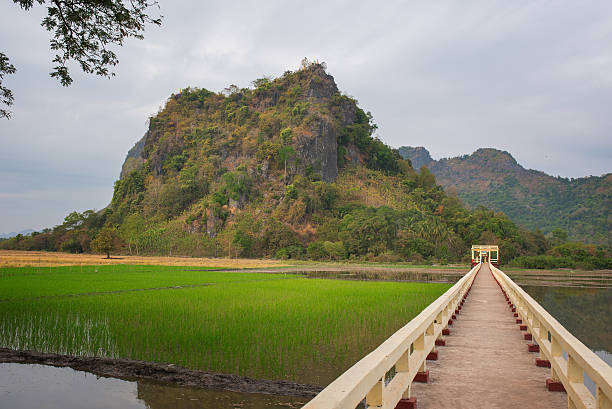
Mawlamyaing (Mon State)
Mawlamyaing, the fourth largest city in Myanmar after Yangon, Mandalay and Naypyitaw, is situated 300 km south east of Yangon ate the mouth of Thanlwin river. During colonial times, Moulmein (Mawlamyaing) was known as "little England" due to the large Anglo-Burmese community.
The town's highlight is Kayikthanlan, which was built in 875 AD and enshrines the hair relic from the Buddha. Famed as Kipling's Pagoda, it is the highest structure in Mawlamyaing standing 150 feet tall overlooking the town center.
The Thanlwin bridge, stretching 3333 m over the Thanlwin river, the longest road and rail bridge in Myanmar, is the most prominent landmark in the area. There are also places of interest in and around Mawlamyaing.
The largest reclining Buddha image in the world, 180 meters long and meters high, Win Sein Taw Ya, is situated about 20 km south of Mawlamyaing. Inside are numerous rooms with dioramas of the teaching of Buddhism.
Thanbyuzayat, 60 km south, is reputed for the infamous Burma-Siam death railway for which construction tens of thousands of people during Wold War II under the Japanese occupation. "Set se" beach few km away from Thanbyzayat is of a one-stop relaxation.
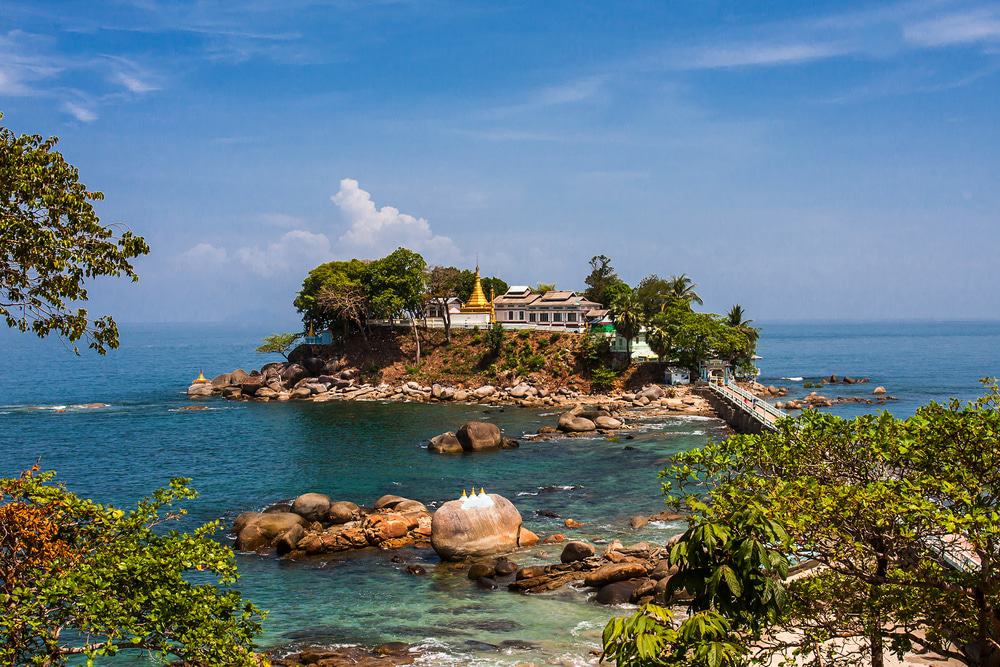
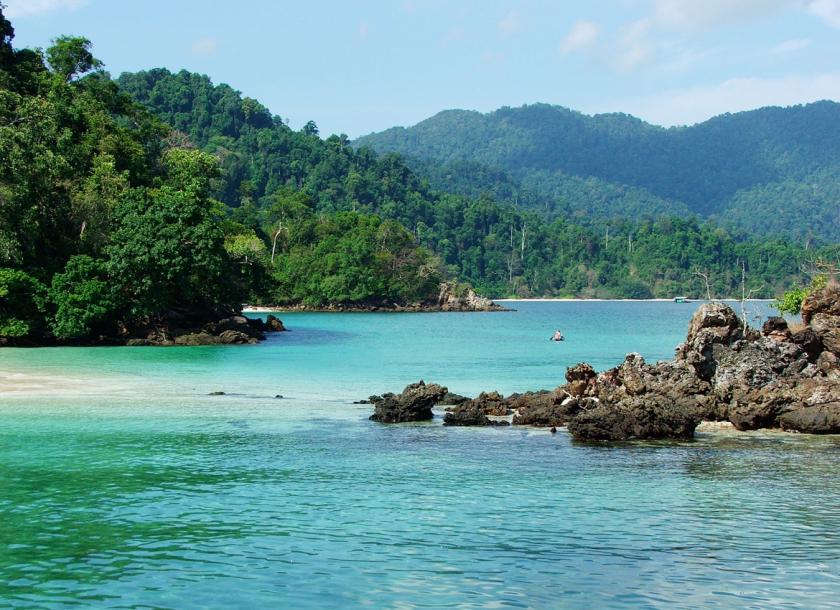
Dawei (Tavoy)
Dawei, formerly called "Tavoy" by the British rulers, situated by the Dawei River which flows in the Andaman Sea about 614 km south of Yangon, is capital of Tanintharyi Region. Its famous products are rubber, casher nuts, betel nuts and durian (als called "King of fruits". Dawei is a weaving center and Dawei Longyi (sarong) is, therefore, a famous local product. The local peo;le speak Myanmar language with their strong dialect but event he Myanmar people are difficult to understand.
One of the main attractions for tourists is the Maungmakan beach, about 40 minutes drive from Dawe, a pristine and popular beac. The laregest reclining Buddha in Myanmar is in Dawei (about 30 mins drive from Dawei).
Recently Dawei was connected to the rest of Myanmar by road and rail. Dawei has a port at the head of the Dawei River estuary, 30 km (18.6 mil) from the Andaman Sea. As a result, a Deepwater Port in Dawei is under construction.
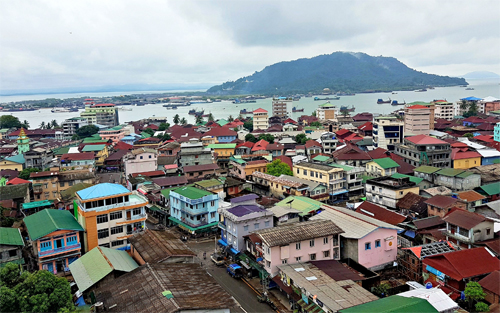
Myeik
Myeik - pronounced as "Beik" and the commercial hub of the Thanintharyi Divison nowadays - is located in the extreme south of the country on the coast of an island o the Andaman Sea. As of 201 the estimated population was over 209,000. As regards economy, the population is engaged in fishing, crab and lobster breeding farms, production of rubber and coconuts manufacture of fermented shrimp paste, the collection of edible bird's nests and pearl farming.
One of the attractions nearby Myeik is a visist to Phahtaw and Phahte mountains which are protruding from the sea just 20 minutes boat ride from Myeik. On these two protruded mountains soft-sheel crab breeding farms and lobster breeding farms exist.
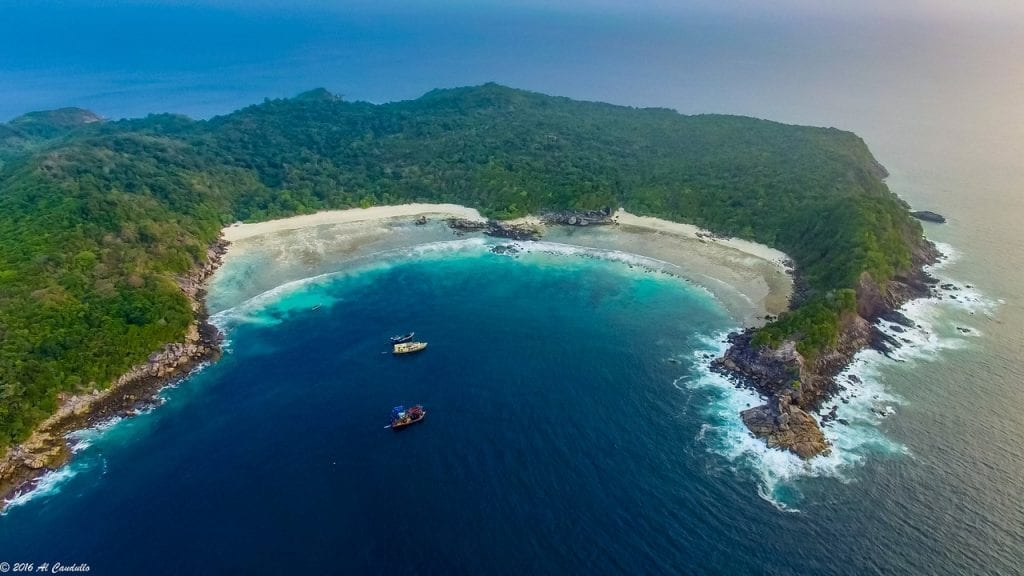
Mergui Archipelago
Mergui is a gateway to the 800 offshore islands of the Mergui Archipelago which are famous for incredibly unspoiled beauty. Tourism in the area is just under developing state and this keeps the area very attractive as low impact tourism the area's natural beauty.
The Salone pople - famous name called "the sea gypsies" - are the only dwellers in that immense area; huts are erected on the small island during the rainy season and stay in their small boat after the raining season. They are also famous as pearl divers.
Among the untouched stunning islands with diversities of flora and fauns, underwater scenes and marine life, Lampi island; Gt. Swinton (Kyun Phila); Pulau Beda (Nyaung Wee island)' Kha Yin Khwa Kyun are the most prominent. Under the pristine clear water, by snorkeling one can observe the soft, hard and even life corals, colorful reefs, fascination topography, and various prolific fishes.
Mergui Archipelago (Myeik Kyunzu in Myanmar) locates at the southernmost of Myanmar in the Andaman sea. It comprises over 800 beautiful islands of various sizes most of which are desert islands.
Geographically, the Archipelago is at the western side of the northern most tip of the Malay Peninsula. The isolation keeps the environment of the Archipelago untouched and virgin. The islands are covered with thick forests where great diversity of flora and fauna exits. Many of the island's shorelines form nice beaches and coral reefs. Moken (Salone in Myanmar) - an ethnic minority also known as sea gypsies - are the only inhabitants of the Archipelago who spend most of their lives roaming the sea in small hand-crafted wooden boat call Kabang.
They are expert fishermen and divers with extensive knowledge of sea survival. Many parts of the Archipelago's underwater offer colorful reefs, awesome topography and various marine lives ranging from big fishes to invertebrates attract the snorkelers and divers.